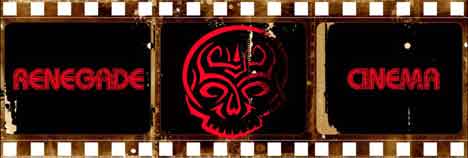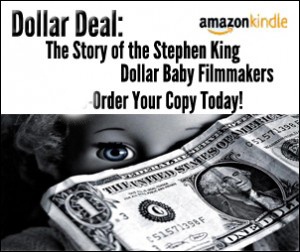One hundred years ago, one of the greatest creative minds and pioneers of modern cinema was born. May 6, would have been Orson Welles’ 100th birthday, and to celebrate, independent and art film houses are screening some of the writer/director/actor’s greatest works – everything from Touch of Evil to the iconic Citizen Kane. The thing about Welles is that there are so many aspects of his career to celebrate and so many great films with which to do it. Here I list a mere handful of projects, from the most iconic to the obscurely interesting, but it still can’t do justice to the scope of his works and the influence he had on modern filmmaking.
Touch of Evil
The entire two years I was in grad school I was the TA for an undergraduate film class in which we watched Touch of Evil every semester – which means I saw this movie a total of four times over two years, not including the instances I might have seen it in my own classes. Believe it or not, I only had to sit through Citizen Kane once. And believe it or not, I still unabashedly love this movie. As one of the last film noir movies of the period, Touch of Evil is overblown to the point of near parody, but it still manages to be affecting and poignant. It is also one of the strangest film noir movies in existence, set on the boarder of the US and Mexico, with Charlton Heston playing a Mexican policeman, and Welles as an overstuffed, corrupt detective.
Too Much Johnson
You might have heard a lot about this movie rather recently since this “lost” film was rediscovered and preserved in 2013 and subsequently premiered to great excitement among film fans. This film was meant as a multimedia accompaniment to a 1938 Mercury Theatre stage adaptation of a William Gillette play of the same name. While the film wasn’t used as intended, the six reels of footage that the twenty-three year old Welles shot displays not only a love and knowledge of movies and film styles, but a superb eye for light, shadows, and framing. A young and dashing Joseph Cotton makes his first of many appearances in a Welles film as the romantic hero. Too Much Johnson is available to watch in full at the National Film Preservation Foundation website.
The Third Man
Not only is this one of my favorite Orson Welles movies, but one of my favorite movies in general. It’s an unusual film noir, directed by Carol Reed and set in Allied-occupied Vienna as the city still struggles to recover from the damage caused by WWII. The tone of the movie is both sad and quirky, as the two main characters mourn the death of their friend, fall in love, and solve a mystery, all punctuated by lively zither music, dizzying dutch angles, and a city in ruins. The Third Man is more than just a movie, its an historical document that captures a great city in a really unique situation. Couple that with the atmospheric cinematography and some captivating performances by Joseph Cotton and Orson Welles and you have one of the greatest movies of all time. I can say that I’m lucky enough to have attended a screening of The Third Man while in Vienna, and it was one of the coolest movie going experiences of my life.
The Trial
When you know that this film is based on the novel by Franz Kafka, a lot about this movie begins to make sense. It is an abstract, menacing, and tense film about a man (Anthony Perkins) who is detained and put on trial without ever knowing of what he is being accused. Welles called this his best film, despite its reception being largely mixed at the time of its release. Predictably, this arthouse film did better in Europe than it did in the US. Welles made this movie on weekends while he was on vacation, improvised many of the scenes on location, and personally dubbed the dialogue for eleven actors – reportedly including a few of Perkins’ lines. It seemed to be a real passion project and certainly outside the scope of Hollywood. Opinion today has shifted from the mixed reviews to more of a general consensus, regarding this film as one of the masterpieces of cinema.
The War of the Worlds (radio drama)
Welles’ Mercury Theatre did a lot of creative and imaginative things on stage, but one of their most legendary performances took place over the radio. Welles adapted H.G. Wells’ sci-fi story about invaders from space into a series of news reports and radio broadcasts, performing this adaptation for radio. Had listeners tuned in at the beginning of the broadcast, they would have known the performance for what it was. Legend has it, though, that a few listeners tuned in a little late and though the reports of space invaders were real. Considering that this was October of 1938 and that tensions over WWII were high, the panic that ensued can perhaps be more understandable. Even so, the effect The War of the Worlds had on the public cemented Orson Welles as a master dramatist and a legendary figure.
Monsieur Verdoux
This was originally meant to be a film starring Charles Chaplin and directed by Orson Welles, but the famously controlling Chaplin felt uncomfortable performing under anyone else’s direction but his own. So Chaplin bought the script – written by Welles – made some changes and directed it himself. In the end, Chaplin credited Welles merely with the idea for the story, taking credit for the rest himself. Welles apparently shrugged it off, saying that the changes made were substantial enough to merit an idea credit. In any case, Monsieur Verdoux is one of Chaplin’s more unusual films, telling the story of a serial killer who marries and then murders women in order to inherit their money and support his real wife and child. The story certainly seems more like something out of Welles’ mind than of Chaplin’s – a comedy of murders – but the moral reeks of Chaplin: “One murder makes a villain; millions a hero.” One can’t help but wonder what Welles’ Monsieur Verdoux would have been like. He thought that his would have been a better film, considering Chaplin to be merely competent as a director – which I think is a fair statement to make. There really is nothing extraordinary or innovative about Chaplin as a director, but he knew how to get a movie made and how best to capture his own performances – which is all Chaplin ever needed.





